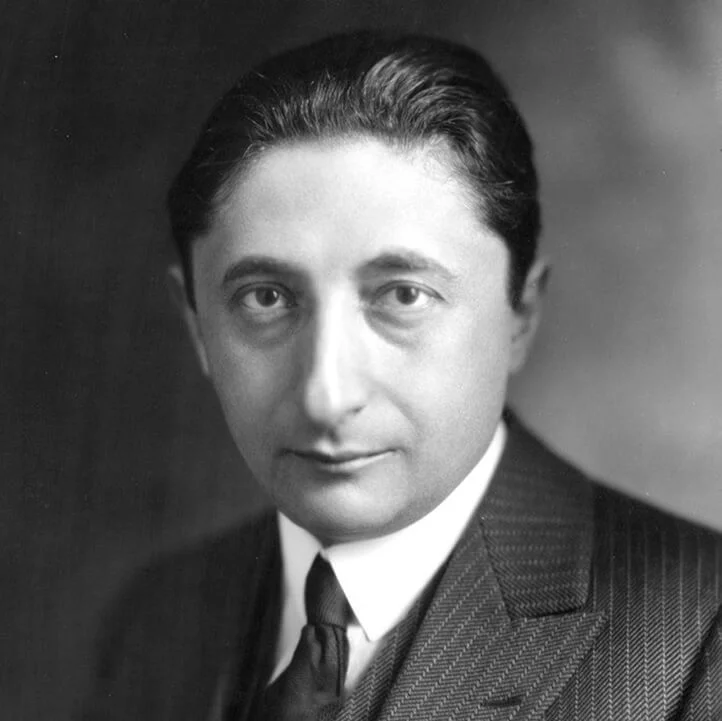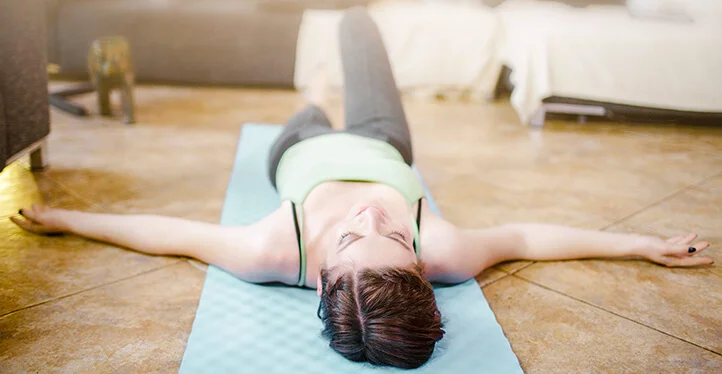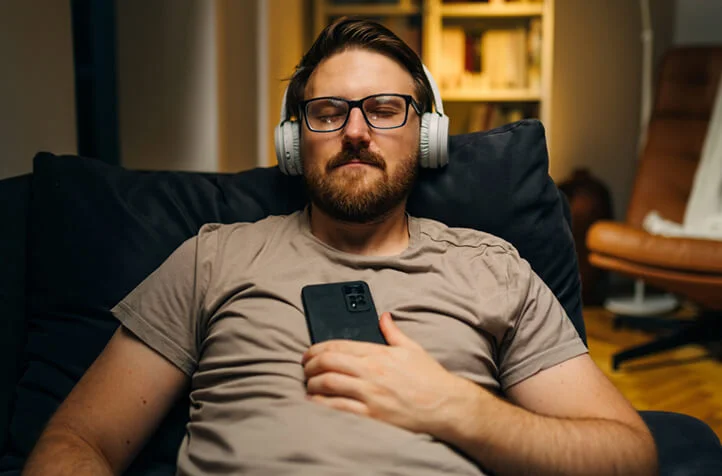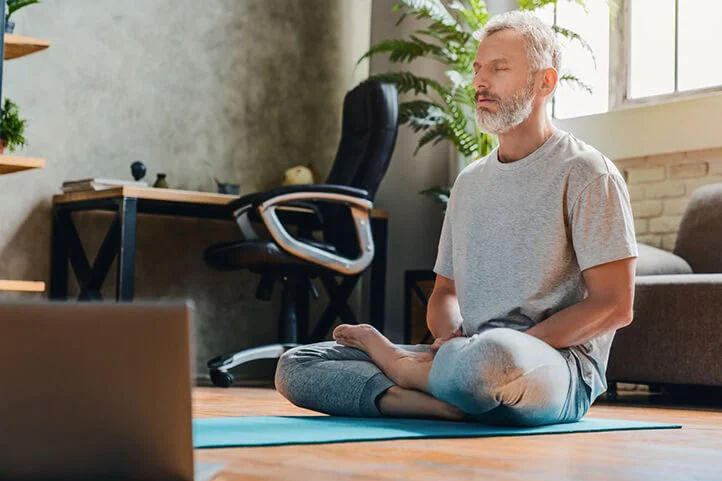In today’s world, full of stress, anxiety, and overwhelm, it is essential to have reliable tools for maintaining mental balance and physical health. One such effective tool is progressive muscle relaxation, a simple and effective way to relieve body tension and achieve deep relaxation.
Progressive muscle relaxation is a method in which a person consciously tenses and relaxes different muscle groups in the body, allowing them to better understand the difference between states of tension and relaxation. Regular practice of this method provides numerous benefits, including reducing stress, anxiety, chronic muscle tension, improving sleep quality, enhancing concentration, and overall well-being.

History and Origin
Progressive muscle relaxation was developed by American physician Edmund Jacobson in the 1920s. Jacobson, who specialized in studying stress and its impact on health, noticed that patients experiencing chronic stress and anxiety often suffered from excessive muscle tension.
While exploring this connection, Jacobson hypothesized that teaching people to consciously relax their muscles could help reduce overall levels of stress and anxiety. He developed a systematic approach in which people first tensed and then relaxed various muscle groups, allowing them to feel the difference between tension and relaxation.
Jacobson’s main idea was that the body cannot remain tense and relaxed at the same time. Therefore, by becoming aware of the difference between these two states in different muscle groups, a person could learn to better control their body and achieve deeper relaxation.
After several years of research and experiments, Jacobson published his work Progressive Relaxation in 1938, paving the way for the widespread adoption of this method. Since then, progressive muscle relaxation has become one of the most studied and practiced stress management techniques worldwide.

How Progressive Muscle Relaxation Works
Progressive muscle relaxation is based on the sequential tension and relaxation of different muscle groups in the body. This process helps you become aware of which muscles are tense and how complete relaxation feels, as well as learn to recognize and reduce excessive tension in the body.
Exercises usually start by tensing a specific muscle group for 5-10 seconds, followed by complete relaxation of the same muscle group for 10-20 seconds. This is repeated for each major muscle group, starting with the face and neck, gradually moving to the arms, chest, abdomen, back, and legs.
During each exercise, it is important to focus on the sensations in the body and note the difference between tension and relaxation. This allows you to better understand where tension accumulates in the body.
For example, when tensing the facial muscles, you might frown, squeeze your eyelids, wrinkle your nose, and press your lips together, focusing on the feeling of tightness in this area. Then, as you relax your facial muscles, notice the contrast between the tense and relaxed states.
Through consistent practice and awareness of these sensations in different parts of the body, you become more sensitive to the buildup of tension and better recognize stress signals. This, in turn, allows you to apply relaxation techniques more effectively in daily life.
It is important to note that progressive muscle relaxation is an active process that requires attention and focus. It does not involve passively waiting for relaxation but rather engages you in conscious work to tense and relax the muscles of the body.
Preparation for Practice
Before starting progressive muscle relaxation exercises, it is important to create the right environment and prepare properly. Here are some recommendations:
- Choose a quiet and comfortable place where you will not be disturbed. This can be a bedroom, living room, or any other room where you can relax without distractions, such as noise, bright lights, or constant interruptions.
- Wear loose and comfortable clothing that does not restrict movement and allows for complete relaxation. Avoid tight or restrictive clothing that may limit circulation or cause discomfort.
- Find a comfortable position. Many prefer to sit in a chair or lie on their back on a flat surface, but choose the position that is most comfortable for you. It is important for the body to be relaxed and the spine aligned.
- Pay attention to your breathing. During the exercises, it is important to breathe deeply and evenly, using diaphragmatic breathing. This will help you relax even further and focus on bodily sensations. Before starting the exercises, you can take a few deep breaths to calm your breathing.
- Eliminate potential distractions. Before practicing, turn off your phone, TV, and other devices that might distract you. Make sure the room is at a comfortable temperature and has enough fresh air.
- Be patient and don’t rush. Progressive muscle relaxation takes time and practice. Don’t expect instant results; be patient and focus on the process.
- Create an atmosphere. Many people light an aromatic candle before practice or play soothing meditation music. This helps set the mood.
Sequence of Exercises
Progressive muscle relaxation exercises are usually performed in a specific sequence, starting with the facial and neck muscles and gradually moving to other muscle groups. Here is a typical sequence of exercises:
- Facial Muscles
- Frown, tensing the muscles of your forehead, hold the tension for 5-10 seconds, then relax.
- Tightly squeeze your eyelids, tensing the muscles around your eyes, hold and relax.
- Wrinkle your nose as strongly as possible, hold and relax.
- Press your lips together, tensing the muscles of your mouth, hold and relax.
- Clench your jaws as if trying to bite down hard on something, hold and relax.
- Neck Muscles
- Tilt your head forward, tensing the muscles at the back of your neck, hold the tension, then relax them by straightening your neck.
- Turn your head to the right, tensing the muscles on the left side of your neck, hold, then relax and return your head to the center.
- Repeat the same movement to the left, tensing the muscles on the right side of your neck.
- Shoulder and Arm Muscles
- Raise your shoulders toward your ears, tensing the muscles around them, hold and lower them, fully relaxing.
- Clench your fists tightly, tensing the muscles in your arms up to your elbows, then relax by unclenching your palms.
- Straighten your arms in front of you, bend them at the elbows, tensing your biceps, hold, and relax.
- Chest, Abdomen, and Back Muscles
- Take a deep breath, expanding your chest and tensing the intercostal muscles, hold your breath, then exhale and relax.
- Pull in your stomach, tensing your abdominal muscles, hold the tension, then relax your abdominal muscles.
- Arch your back, tensing the muscles in your lower back, hold the arch, then return your back to a neutral position.
- Arch your back forward, tensing the muscles in your upper back and shoulder blades, hold and relax.
- Buttocks, Thigh, and Leg Muscles
- Tighten your gluteal muscles as if you are squeezing them, hold and relax.
- Tense your thigh muscles as if you are lifting your legs off the floor (if lying) or extending them forward (if sitting), hold and relax.
- Tense your calf muscles as if standing on tiptoes, hold and relax.
- Squeeze your toes, tensing the muscles of your feet, hold and stretch your toes out, relaxing your feet.
During each exercise, it is important to focus and truly feel the tension and subsequent relaxation in the involved muscle groups. Visualize the tension leaving your body.
Continue to breathe deeply and evenly throughout the practice. Don’t rush, give your body time to fully relax after each tension.
If a specific area causes discomfort or pain, avoid over-tensing those muscles. A moderate effort is sufficient.
As you practice, you will become more attuned to the sensations of tension and relaxation, which will help you apply these skills in daily life.
Duration and Recommendations
A session of progressive muscle relaxation usually lasts between 15 and 30 minutes, but this interval may vary depending on your needs, stress levels, and preferences.
Here are some additional recommendations for effective and regular practice:
- Frequency. To achieve the best results, progressive muscle relaxation is recommended to be practiced once or twice a day. Daily practice will help you better understand muscle tension and more quickly achieve a relaxed state.
- Ideal Time. Choose a time when you won’t be distracted. Many prefer to perform the exercises in the morning to start the day with calm or in the evening after a workday to relieve accumulated tension. However, listen to your body and choose a time that best fits your routine.
- Visualization. Some people find it helpful to visualize muscle tension and relaxation during the exercises. For example, imagine tension flowing out of your body like mist or smoke as your muscles relax.
- Background Sounds. While it’s best to practice in silence, you can listen to soothing meditation music or nature sounds during the practice. Sometimes this helps deepen relaxation.
- Combination with Other Methods. Progressive muscle relaxation pairs well with other stress management techniques, such as meditation, yoga, and mindfulness exercises. Try combining them for maximum effect.
- Track Progress. Keep a journal and note how you feel before and after practice. This will help track your progress and maintain motivation.
Regular practice of progressive muscle relaxation is a valuable tool for managing anxiety, stress, and maintaining overall well-being. The key to success is consistency, patience, and integrating this technique into your daily life.

Health Benefits
Progressive muscle relaxation offers a wide range of positive effects for both physical and mental health. Regular practice of this technique can become a powerful tool for maintaining overall well-being and improving quality of life. Systematically relaxing the body and mind through deliberate tensing and releasing of various muscle groups helps eliminate chronic tension and stress, which are sources of many health issues.
Research confirms that progressive relaxation has a beneficial impact on a wide range of conditions, from reducing anxiety and improving sleep to alleviating chronic pain and symptoms of depression. It is a universal self-regulation technique that is accessible to people of all ages and fitness levels.
Reduction of Stress and Anxiety
One of the main benefits of this technique is its ability to reduce stress and anxiety. When the body is relaxed, stress hormone levels decrease, promoting a general sense of peace and calm.
Studies have shown that regular practice of progressive relaxation helps reduce symptoms of anxiety disorders, post-traumatic stress disorder (PTSD) and overall stress levels.
Improved Sleep Quality
Chronic stress and anxiety often lead to sleep disturbances such as difficulty falling asleep, restless sleep, or early awakenings. Progressive muscle relaxation helps ease the process of falling asleep, promoting deeper and more restorative sleep.
One study found that patients with insomnia who practiced progressive relaxation for eight weeks significantly improved their sleep quality and reduced the time it took them to fall asleep.
Pain Relief
Since progressive relaxation directly targets muscle relaxation, it helps alleviate muscle tension and related pain. This is especially beneficial for people suffering from chronic pain in areas like the back, neck, shoulders, or other parts of the body.
By relaxing tense muscles, you reduce pressure on nerve endings, which decreases pain sensations. Additionally, relaxation promotes the release of endorphins—the body’s natural pain relievers.
Reduction of Headaches
Many types of migraines are partly caused by excessive tension in the neck and shoulder muscles. Progressive muscle relaxation helps reduce the frequency and intensity of headaches by relaxing these problematic areas.
Studies have shown that patients suffering from chronic migraines experienced a significant reduction in the frequency and severity of their attacks after six weeks of progressive relaxation practice.
Improved Concentration and Focus
Stress and anxiety greatly affect the ability to concentrate and stay attentive. Regular practice of progressive muscle relaxation helps reduce stress levels and eliminate intrusive thoughts, leading to better concentration.
In one study, students who practiced progressive muscle relaxation showed significant improvements in attention and cognitive function compared to the control group.
Managing Anger and Negative Emotions
Excessive muscle tension is often linked to negative emotions such as anger, frustration, or hostility. Progressive muscle relaxation allows for reducing internal tension and expressing emotions more constructively.
Research has shown that people who regularly practice this method have learned to control anger and aggression in their daily lives.
Reduction of Depression Symptoms
While progressive muscle relaxation is not a cure for clinical depression, it can be a useful addition to standard therapy. By reducing stress, anxiety, and muscle tension, this technique helps alleviate some symptoms of depressive disorders.
In one study, patients with depression who practiced progressive relaxation in combination with traditional therapy showed improved mood and reduced levels of depression compared to the group receiving only medication.
Overall Well-Being Improvement
In addition to specific benefits, progressive muscle relaxation contributes to an overall increase in quality of life and well-being. Regular relaxation of both body and mind helps mitigate the impact of stress on health, boost energy levels, and enhance vitality.
Many people who practice this technique report a greater sense of control over their body and emotions, a more positive outlook, and improved self-perception.
It is important to note that although progressive muscle relaxation offers many benefits, it does not replace traditional medical treatment. If you suffer from serious mental or physical health conditions, consult a qualified professional before using this technique.
However, with regular practice, progressive relaxation can become a valuable addition to your lifestyle, helping you manage stress, enhance overall well-being, and maintain a healthy balance between body and mind.

Variants and Modifications
While the classic method of progressive muscle relaxation involves tensing and relaxing muscle groups in a specific sequence, there are various alternatives and modifications you can try depending on your preferences and needs.
Relaxation Without Tensing
Some people find it difficult to tense muscles due to pain, injury, or limited mobility. In such cases, you can skip the tensing phase and focus solely on relaxing various muscle groups.
During practice, mentally highlight each area of the body and concentrate on the sensation of complete relaxation in those muscles. Visualize the tension leaving that area. Although this approach is less intense, it still helps develop mindfulness of muscle sensations.
Abbreviated Version
If you have limited time, you can practice a shortened version of progressive relaxation by focusing only on a few key muscle groups. For example, start with the muscles of the face and neck, then move to the shoulders, back, and finish with the legs.
This shortened practice takes only 5-10 minutes but still helps relieve some tension and relax the body.
Targeting a Specific Area
Sometimes, tension is especially pronounced in a specific part of the body, such as the shoulders and neck after sitting at a computer for long periods. In such cases, instead of doing a full-body relaxation, you can focus on the problem area.
Perform the tensing and relaxing exercises specifically for the muscles of the shoulders, neck, and upper back. This allows you to concentrate on the most uncomfortable areas and relieve chronic tension.
Incorporating Breathing Techniques
Many people prefer to combine progressive muscle relaxation with breathing exercises, such as diaphragmatic breathing or abdominal breathing. This enhances the relaxing effect and helps deepen your focus on bodily sensations.
After each cycle of tensing and relaxing, take a few slow deep breaths, focusing on the sensation of muscle relaxation.
Using Guided Instructions
Some individuals find it challenging to track the sequence of exercises or stay focused throughout the entire practice. In such situations, audio recordings with step-by-step instructions for progressive relaxation can be helpful.
YouTube channels and websites offer recordings with guided instructions that lead you through each stage of the exercises. This allows you to fully immerse in the process without the distraction of memorizing the sequence.
Personal Adaptation
Remember, progressive muscle relaxation is a flexible technique that can be adapted to your individual needs and preferences. Experiment with different options until you find the one that works best for you.
Some people prefer alternating the tensing and relaxing of body sides, others perform exercises in a free order, add their own visualizations, mantras, or affirmations during the practice to enhance the effect. You can do the same.
The most important thing is to stay focused on your bodily sensations. Over time, you will develop a finer sense of recognizing tension and relaxation, which will help you manage stress better in everyday life.

Overcoming Difficulties
Although progressive muscle relaxation is a relatively simple technique, some people may encounter certain challenges when practicing it. Here are some common problems and tips for overcoming them:
Difficulty Concentrating
Many beginners find it hard to focus during the exercises, especially when their minds are active and filled with distracting thoughts. If you find yourself constantly distracted, try the following:
- choose a quiet place free from distractions;
- use audio recordings with guided instructions;
- focus on your breathing between exercises;
- be patient and don’t criticize yourself for not being able to fully concentrate on progressive muscle relaxation—it’s normal in the beginning.
Difficulty Tensing Muscles
Some people, especially the elderly or those with limited mobility, may find it hard to tense certain muscle groups. In this case:
- avoid excessive tension—moderate effort is sufficient;
- focus on the sensation of relaxation after minimal tension;
- use the relaxation-only variation without the tension phase.
Pain or Discomfort
For people with chronic pain or injuries, tensing certain muscles may cause pain or discomfort. In this case:
- avoid tensing painful areas of the body;
- focus only on the relaxation part of the exercises;
- consult a doctor or physical therapist about safe limits of muscle tension.
Drowsiness
Some people experience strong drowsiness or enter a trance-like state during the exercises. This is normal, but it can interfere with mindful practice. To prevent this:
- sit up straight or adopt a semi-seated position;
- take a few deep breaths to energize yourself;
- visualize energy spreading throughout your body;
- if you feel very sleepy, it’s better to reschedule the practice for another time.
The main thing is to remain patient and not get discouraged if things don’t go perfectly at first. Progressive muscle relaxation takes some practice to fully master. Over time, you’ll learn to overcome any challenges and fully benefit from this powerful stress management technique.

Teaching Children Progressive Muscle Relaxation
Progressive muscle relaxation is very beneficial for children who experience stress, anxiety, or difficulty concentrating. Learning this technique at an early age helps them develop emotional intelligence and self-regulation skills.
When teaching children progressive relaxation, it’s important to adapt the exercises to their age and level of understanding. To do this:
- use simple, understandable language for explanations;
- offer visualizations and images that are easy for children to imagine;
- make the process more playful and fun—imitate animals, make funny faces;
- practice the exercises together with the child, leading by example;
- start with short 5-10 minute sessions, gradually increasing the duration;
- praise and encourage them even for small progress.
Regular practice will help children manage their emotions more easily, improve concentration, and enhance their sleep. It’s a skill that will stay with them for life.

Progressive Muscle Relaxation for Different Situations and Areas of Activity
In addition to daily practice for general relaxation, progressive muscle relaxation can be especially useful in certain stressful situations:
- Before important events. Perform brief exercises before public speaking, interviews, exams, etc., to relax and gather your thoughts. A few minutes of relaxation can significantly reduce anxiety.
- During stress. If you feel tension building up while solving complex tasks or during stressful negotiations, take a short break and quickly go through the main muscles, tensing and relaxing them.
- For overcoming insomnia. Progressive muscle relaxation helps prepare the body and mind for sleep. Do the exercises in bed 30-60 minutes before rest.
- After physical exertion. Athletes often use this technique to relax their muscles after intense workouts. This helps relieve muscle tension and promotes faster recovery.
- For chronic pain. Regular practice provides relief to people suffering from chronic back, neck, shoulder pain, and other areas by reducing muscle spasms.
In the Workplace
Workplace stress is a common issue in modern society. Constant pressure, tight deadlines, and conflicts within teams can lead to chronic stress, emotional burnout, and reduced productivity.
Many companies now recognize the importance of stress reduction programs for their employees and offer various wellness activities. Learning progressive muscle relaxation can be a valuable addition to such programs.
- Short 10-15 minute relaxation sessions can be held directly at the workplace in designated rest rooms or gyms.
- Exercises can be done in the first half of the day to improve concentration and productivity or after lunch to prevent the afternoon energy slump.
- Employers can hire instructors for group classes or provide access to online courses and audio materials on progressive relaxation.
- Managers can also be trained to use these techniques during stressful meetings, presentations, or negotiations.
Investing in stress reduction programs ultimately pays off through increased productivity, employee loyalty, reduced absenteeism, and lower staff turnover. Progressive relaxation can play an important role in maintaining a healthy and productive work environment.
In Medicine
In the medical field, progressive muscle relaxation can be used as an adjunct method of treatment and rehabilitation for various conditions:
- Pain management. The ability to reduce tension makes progressive muscle relaxation an effective tool in treating chronic pain syndrome, fibromyalgia, migraines, and even postoperative pain relief.
- Mental disorders. Progressive muscle relaxation is recommended as an adjunctive therapy for conditions such as depression, anxiety disorder, and post-traumatic stress disorder (PTSD). It helps reduce stress and anxiety, which often exacerbate symptoms.
- Cardiovascular diseases. Relaxation contributes to lowering blood pressure and heart rate. Teaching patients progressive muscle relaxation is recommended for hypertension, rehabilitation after heart attacks, and surgeries.
- Oncology. In cancer treatment, progressive muscle relaxation is used to combat stress, depression, fatigue, and other side effects of treatment, improving patients’ quality of life.
- Obstetrics and pediatrics. Pregnant women can use this technique to reduce stress and alleviate pain during labor. It also helps children cope with procedural stress and pain.
Many hospitals and rehabilitation centers already teach progressive muscle relaxation or offer consultations on this method. Its effectiveness has been confirmed by numerous studies as a safe and inexpensive adjunct therapy for a wide range of conditions.
In Sports
For many athletes, the ability to manage stress and stay calm is key to successful performance. Progressive muscle relaxation can be a valuable tool for both pre-competition anxiety relief and recovery after physical exertion.
- Improved concentration and focus. Relaxing the body and mind helps athletes get rid of intrusive thoughts and anxiety before competitions, allowing them to focus on the task at hand. Many professional teams include progressive muscle relaxation sessions in their warm-ups and preparation.
- Stress relief and recovery. Intense training and competition place significant physical and psychological stress on the body. Regular muscle relaxation practice helps relieve this tension and speed up recovery.
- Injury prevention. Excessive muscle tension is considered a risk factor for sports injuries. Training athletes in progressive relaxation helps maintain optimal muscle tone and avoid overloading them.
- Pain management. Athletes often experience muscle pain and discomfort related to training and injuries. Relaxation techniques can be used to reduce the intensity of pain and speed up rehabilitation.
Many well-known athletes and teams have integrated progressive muscle relaxation into their mental training programs. Its effectiveness in reducing stress and improving athletic performance has been confirmed by research.
In Education
Stress is also a common problem in the field of education – both for students and teachers. Progressive muscle relaxation can be beneficial in the following areas:
- Academic performance. Many students experience excessive stress due to academic workload, tests, and exams. This stress can negatively impact concentration, memory, and the ability to absorb new information. Teaching students stress management techniques, including progressive muscle relaxation, can improve academic performance.
- Behavioral issues. In children and adolescents, excessive stress may manifest as bad behavior, anger outbursts, depression or anxiety. Relaxation skills programs help these students better regulate their emotions and focus on learning.
- Teacher burnout. Emotional burnout syndrome is widespread among teachers. Progressive muscle relaxation can be included in employee wellness programs to prevent burnout and maintain teachers’ mental health.
Some schools and universities have already implemented stress management programs using mindfulness, meditation, and progressive relaxation techniques. This not only improves student performance and behavior but also creates a more favorable learning environment overall.
In the Correctional System and Rehabilitation
Prisons, correctional institutions, and rehabilitation centers often experience high levels of stress, anxiety, and aggression among both inmates and staff. In this case, teaching stress management methods, such as progressive muscle relaxation, can have a positive impact.
- Reducing anxiety and aggression in inmates. Progressive muscle relaxation helps improve emotional regulation and control over anger or aggressive behavior. Its use in correctional facilities has been associated with fewer incidents and an improved atmosphere.
- Alleviating symptoms of PTSD. Many inmates suffer from PTSD due to past violence or traumatic experiences before incarceration. Muscle relaxation, combined with other forms of therapy, helps alleviate PTSD symptoms.
- Supporting rehabilitation programs. In rehabilitation centers for people with addictions, progressive muscle relaxation is used to reduce the risk of relapse. It helps manage anxiety, depression, and cravings for harmful substances.
- Preventing burnout among staff. Workers in correctional facilities regularly face high levels of stress. Learning relaxation techniques helps them better cope with internal tension and the risk of burnout.
Programs based on progressive muscle relaxation are gaining popularity in the penal system. They have proven effective in improving inmate behavior, reducing conflicts, and enhancing the quality of life for both inmates and staff.
In the Military and Rescue Services
Military personnel, police officers, firefighters, and rescue workers regularly encounter extreme stress while performing their duties. Progressive muscle relaxation can become a valuable skill for these professions:
- Psychological resilience in combat situations. For military personnel, the ability to remain calm and focused in extreme situations is critically important. Learning progressive relaxation increases their stress tolerance.
- PTSD prevention and treatment. After participating in combat or other traumatic situations, many soldiers and rescuers suffer from PTSD. Relaxation techniques can be used alongside traditional therapy to alleviate symptoms.
- Maintaining readiness and alertness. Military personnel and rescue workers often need to remain on high alert for extended periods. Short relaxation sessions help reduce the strain and maintain readiness.
- Alleviating physical stress symptoms. In addition to the psychological aspect, intense stress can lead to physical problems such as insomnia, muscle spasms, and headaches. Progressive relaxation helps reduce these symptoms.
The armed forces of many countries have already incorporated progressive muscle relaxation training into their personnel preparation programs. Research shows that this technique improves the mental health of military personnel and enhances their effectiveness in extreme situations.
In Aviation
In the aviation industry, where safety is paramount, stress management among crew members is a critical factor. Progressive muscle relaxation can be a useful addition to health and wellness programs for pilots and flight attendants.
- Improving concentration and alertness in pilots. Flying an airplane requires the highest level of concentration and attentiveness over long periods of time. Relaxation techniques, such as progressive muscle relaxation, help reduce stress and fatigue, keeping pilots in an optimal state of wakefulness.
- Overcoming stress in non-standard situations. Aviation often involves unforeseen and stressful situations, such as turbulence, equipment failure, or passenger conflicts. The ability to quickly relieve tension helps the crew remain calm and make the right decisions.
- Alleviating symptoms of jet lag. Frequent flights across multiple time zones can cause sleep disturbances, fatigue, and stress among crew members. Regular relaxation practice helps better cope with these issues.
- Reducing the risk of PTSD. Pilots and flight attendants may sometimes witness or be involved in traumatic aviation incidents. Progressive relaxation can be used as a preventive measure to reduce the risk of developing PTSD.
Airlines around the world are increasingly including stress management programs in their crew training. Many carriers offer courses on progressive relaxation, meditation, and other stress-reduction methods. This improves flight safety and the overall well-being of aviation personnel.
In Creative Professions
The creative process is often associated with tremendous stress and pressure, both internal and external. Mastering relaxation techniques helps creative individuals cope with blocks, perfectionism, and other obstacles to self-expression.
- Overcoming creative blocks. For writers, artists, musicians, and other creatives, periods of creative stagnation or dissatisfaction are common problems. Progressive muscle relaxation helps reduce internal tension and anxiety, allowing new perspective and inspiration.
- Managing perfectionism and self-criticism. Many creative individuals tend to be perfectionistic and overly critical of their work. Relaxation techniques foster a more balanced and calm approach to the creative process.
- Increasing creativity and imagination. Some research shows that a relaxed state of body and mind stimulates creative thinking and imagination. Progressive relaxation sessions can be used as a “warm-up” for creative activities.
- Presentations and public speaking. For many creative professionals, the ability to effectively present and promote their work is important. Progressive muscle relaxation can help manage anxiety and fear of public speaking.
More and more creative unions, studios and educational institutions are including stress management classes and relaxation techniques in their programs. This allows artists to develop the necessary self-regulation skills to maintain their talent and inspiration.

Progressive Muscle Relaxation and Meditation
Many people combine progressive muscle relaxation with mindfulness and meditation practices. This combination is indeed powerful and can deepen your experience of tranquility and self-regulation.
After completing the muscle relaxation exercises, sit still for a few minutes in complete silence, focusing only on your breathing. Be aware of the sensations in your body, the flow of energy, and the feeling of calm.
This exercise helps develop mindfulness, presence in the moment, and clears away any lingering anxious thoughts. You can also use a mantra, visualization, or silent meditation practice.
The combination of progressive relaxation with meditation is particularly effective in relieving symptoms of anxiety, stress, chronic pain, and depression. It helps calm both the body and mind, allowing you to enter a state of deep relaxation and peace.
Try different approaches and find what works best for you. The key is regular practice and patience. Over time, the calming effects of the sessions will become deeper and more lasting.
This is a journey of self-discovery that will help you develop a more mindful approach to life and better manage stress and emotions. Enjoy each moment of calm and observe how your overall well-being improves.

Conclusion
Progressive muscle relaxation is a simple yet effective technique with numerous benefits for both physical and mental health. Regular practice of this method will help you become more aware of and reduce muscle tension, which in turn contributes to reducing stress, improving sleep, and enhancing overall quality of life.
If you feel that stress and anxiety are starting to negatively affect you, progressive muscle relaxation can be a valuable tool to restore inner balance and peace. Don’t hesitate to try this technique and experience its healing effects for yourself.




